Accuracy Athlete

Can virtual reality training improve athlete skills ?
Virtual reality (VR) technology has been increasingly utilized in sports training, raising the question of whether it can improve athlete skills. The answer depends on several factors, including the type of sport and specific skills required. VR platforms offer a novel medium to develop cognitive skills such as concentration and alternating attention. They can be highly beneficial for sports requiring precision and accuracy, providing a controlled environment for repeated practice and immediate feedback. However, VR should not replace traditional physical training entirely but be used as a supplementary tool. Additionally, VR can help athletes mentally prepare for competition by simulating game scenarios and practicing decision-making skills under pressure. The effectiveness of VR training depends on various factors, and its evolution in sports training programs will be interesting to observe as technology advances.
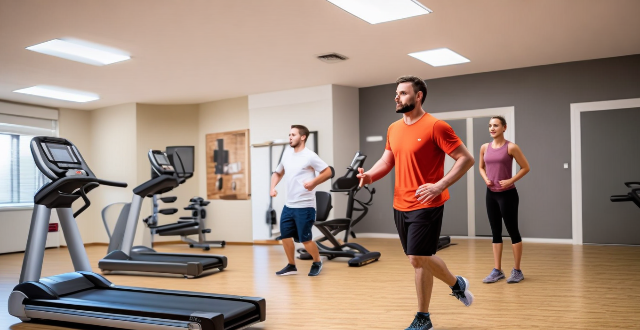
Can AI improve sports performance and athlete safety ?
Artificial Intelligence (AI) is transforming the sports industry by enhancing athletic performance and ensuring athlete safety through personalized gear design, optimized nutrition and training schedules, and injury prevention. AI's predictive capabilities help in preemptive measures against injuries, while wearable technology provides real-time data for monitoring an athlete's physical state. The future of AI in sports holds immense potential for real-time feedback, strategy adjustments, and fair play enforcement.

How accurate is sports technology analysis ?
Sports technology analysis has become increasingly popular in recent years, with the development of advanced technologies such as sensors, wearable devices, and machine learning algorithms. These technologies are used to collect and analyze data from athletes' performance during training and competitions, providing valuable insights into their physical condition, technique, and strategy. However, the accuracy of sports technology analysis is a topic of debate among experts. In this article, we will explore the factors that affect the accuracy of sports technology analysis and discuss its limitations.
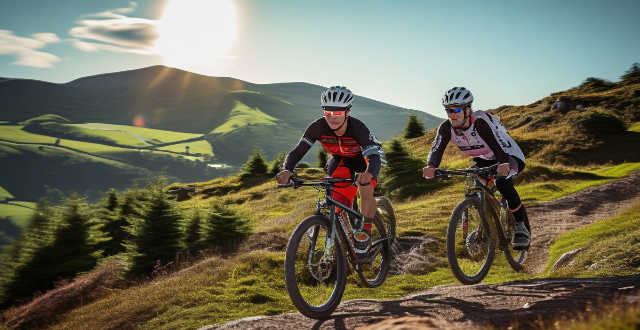
What techniques can be used to improve accuracy in sports like archery or shooting ?
Improving accuracy in sports like archery or shooting can be achieved by following certain techniques. These include maintaining proper stance and grip, focusing on the target, controlling breath, relaxing muscles, practicing consistency, visualization and mental preparation, and being aware of environmental factors. By implementing these techniques, athletes can significantly improve their accuracy in sports like archery or shooting.

How do high-tech training facilities contribute to athlete development and recovery ?
High-tech training facilities contribute to athlete development and recovery by providing advanced equipment, technologies, and personalized programs. These resources help improve performance, prevent injuries, and facilitate efficient recovery.

What is the role of biometric monitoring in athlete health and fitness ?
Biometric monitoring is a valuable tool for athletes to optimize their performance, recovery, and overall well-being. By collecting and analyzing data related to an individual's physical characteristics, such as heart rate, skin temperature, and body composition, athletes can gain insights into areas where they may need improvement or make adjustments to their training regimen. Biometric monitoring can also help athletes monitor their recovery from workouts and competitions, optimize their training regimens, prevent injuries, and enhance their overall well-being. Overall, biometric monitoring plays a crucial role in athlete health and fitness by providing valuable insights into performance, recovery, training regimens, injury prevention, and overall well-being.

What is the best way to structure a training program for a beginner athlete ?
As an AI assistant, I can provide general guidelines and tips on how to structure a training program for a beginner athlete. Before starting any training program, it is important to set clear goals and objectives. Every training session should start with a warm-up and end with a cool-down period. Strength training should be a key component of any beginner athlete's training program. Cardiovascular training is essential for improving endurance, burning calories, and enhancing overall health. Flexibility and mobility are often overlooked but are crucial for preventing injury, improving performance, and maintaining good posture. Recovery and rest are equally important as training itself. By following these guidelines and seeking guidance from qualified coaches or trainers, beginner athletes can safely and effectively improve their fitness levels and achieve their desired outcomes.

What ethical considerations should be taken into account when reporting on athletes' personal lives ?
The text discusses ethical considerations in reporting athletes' personal lives, emphasizing respect for privacy, accuracy and fairness, consent and participation, handling sensitive topics with care, public interest, age and maturity, cultural sensitivity, and aftermath support. It suggests that journalists should avoid intrusion, verify information, ask for permission, handle sensitive topics with care, consider age and maturity, recognize cultural differences, provide resources for support, and follow up responsibly. The text concludes that reporting on athletes' personal lives requires a nuanced approach that prioritizes ethics over sensationalism to maintain integrity while informing the public about the human aspects of sports figures they admire.

What factors contribute to the accuracy of climate forecasts ?
Climate forecasting accuracy is influenced by data quality, model complexity, computational power, ensemble forecasting, feedback mechanisms, human activities, natural variability, and uncertainties.

What factors affect the accuracy of climate model predictions ?
The accuracy of climate model predictions is influenced by various factors including data quality and availability, model complexity and resolution, initial conditions and parameterizations, natural variability and external forcing, and the use of model intercomparison and ensemble methods. High-quality, up-to-date data and comprehensive models that account for multiple physical processes and high-resolution details are crucial. Initial conditions, sub-grid scale process parameterizations, internal climate variability, and external forcing factors add layers of complexity and uncertainty. To mitigate these uncertainties, scientists employ intercomparison projects and ensemble forecasting techniques to assess model reliability and potential future climate scenarios.

How accurate are fitness trackers in monitoring heart rate ?
The accuracy of fitness trackers in monitoring heart rate can be affected by various factors, including device quality, skin type and color, movement, and environmental factors. To improve the accuracy of your fitness tracker's heart rate monitor, it is recommended to choose a reputable brand with advanced sensors and algorithms, wear your device correctly, calibrate your device, and use multiple sensors or a chest strap for better results. By following these tips, you can make more informed decisions about your health and fitness goals.

Do fitness trackers accurately monitor sleep patterns ?
The article discusses the accuracy of fitness trackers in monitoring sleep patterns. It explains that while these devices can provide useful information about sleep duration, quality, and stages, their accuracy may vary depending on factors such as device placement, user movement during sleep, and environmental conditions. The article also compares fitness trackers to professional sleep studies conducted by medical professionals and concludes that fitness trackers should not be considered a substitute for these studies.

What role do auditors play in ensuring the accuracy of TCFD disclosures ?
Auditors play a crucial role in ensuring the accuracy of Task Force on Climate-related Financial Disclosures (TCFD) disclosures. Their key responsibilities include verifying information, assessing processes, and reporting findings to management and interested parties. By conducting audit procedures such as reviewing internal controls and testing their effectiveness, auditors can help ensure that companies provide reliable and transparent information about their climate-related risks and opportunities. This is essential for investors, regulators, and other stakeholders to make informed decisions.

Are there any specific exercises or drills for skill improvement in basketball/football/tennis, etc. ?
Topic: Skill Improvement Exercises and Drills in Basketball, Football, and Tennis Basketball: - Dribble the ball with alternating hands and in a figure 8 motion to improve ball handling skills. - Practice shooting free throws and spot shooting to enhance accuracy and consistency. - Work on lateral movement and closeout drills to improve defensive positioning and quickness. Football (Soccer): - Pass the ball against a wall and in a triangle formation to improve passing accuracy and touch. - Practice shooting at targets and receiving passes before shooting to enhance shooting accuracy and speed. - Work on marking and tackling drills to improve defensive skills and technique. Tennis: - Hit crosscourt groundstrokes and alternate forehand and backhand shots to improve accuracy and consistency. - Practice serving to targets and focusing on second serves to enhance serving reliability and placement. - Work on lateral movement and net approach drills to improve court coverage and net play.

What are the limitations of climate data analysis ?
The article discusses the limitations of climate data analysis, including incompleteness of data, uncertainty in models, limited spatial resolution, bias in sampling, and natural variability. These limitations can impact the accuracy and reliability of the results obtained from climate data analysis. Despite these challenges, scientists continue to develop new methods and technologies to improve the accuracy and reliability of climate data analysis.

How accurate are long-term climate predictions ?
Long-term climate predictions are essential for understanding potential future changes in the environment, but their accuracy is often questioned due to the complexity of the climate system. Factors that influence the accuracy of these predictions include uncertainty in emission scenarios, natural variability, and model limitations. However, advancements in climate modeling, such as higher-resolution models, ensemble modeling, and data assimilation techniques, have significantly improved our ability to make accurate predictions about future climate changes. By continuing to invest in research and development, we can further enhance the precision and reliability of long-term climate predictions, providing critical information for decision-makers and the public alike.
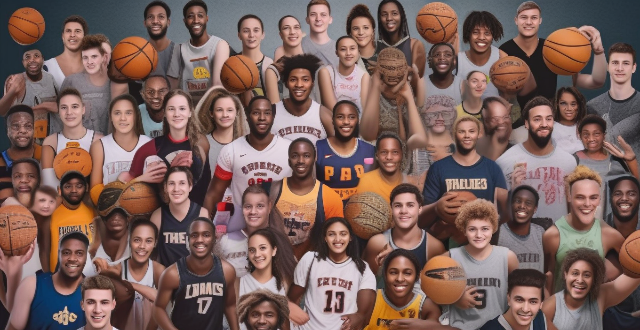
How do I become a professional athlete in basketball ?
To become a professional basketball player, start early, practice regularly, join a team or club, focus on academics and attend a good high school with a strong basketball program. Get recruited by a college program, excel in college, gain national exposure, hire an agent, and go through the draft process. Stay focused, maintain a positive attitude, and be willing to put in the work to achieve success.
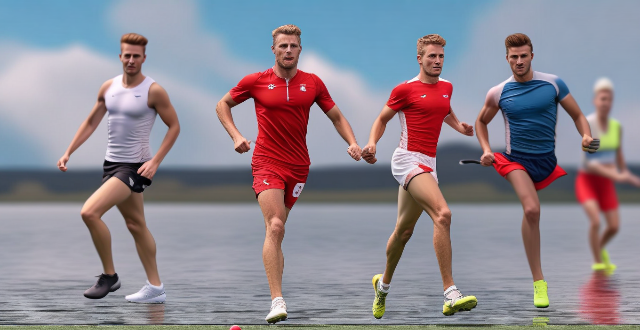
How significant is the role of luck or chance in determining success at high-level sports competitions ?
Luck or chance can play a significant role in determining success at high-level sports competitions. Factors such as injuries, weather conditions, equipment malfunctions, referee decisions, and opponent's mistakes can all contribute to an unexpected outcome. However, skill, training, and strategy are still the most critical factors in determining success in sports.
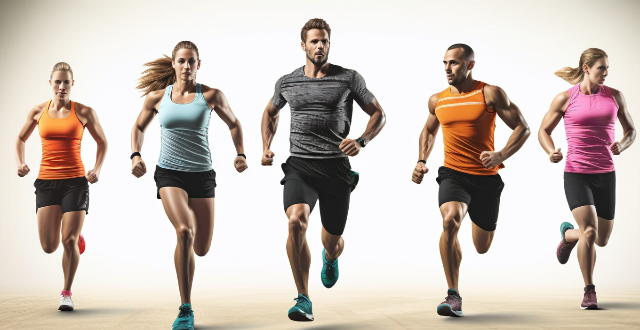
What are the most common metrics used in analyzing sports performance ?
Analyzing sports performance is crucial for athletes, coaches, and teams to improve their skills, strategies, and overall performance. There are several metrics used to evaluate different aspects of sports performance, including time-based metrics such as speed and pace; distance-based metrics such as distance covered and displacement; power-based metrics such as peak power and power endurance; technique-based metrics such as form analysis and biomechanical analysis; physiological metrics such as heart rate and VO2 max; and mental metrics such as mental toughness and motivation levels. These metrics can help athletes and coaches identify areas for improvement and develop effective training programs to enhance performance.
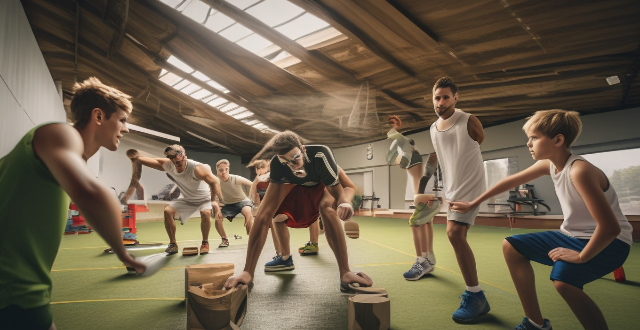
How does sports biomechanics address the unique challenges faced by athletes with disabilities ?
Sports biomechanics plays a crucial role in addressing the unique challenges faced by athletes with disabilities. It helps optimize their performance, enhance their training, and improve their overall well-being through customized equipment design, gait analysis and rehabilitation, sport-specific technique optimization, inclusive sports development, and education and advocacy efforts.

Can rigorous training compensate for natural talent in achieving high-level sports performance ?
In sports, the debate between natural talent and hard work continues. While some argue that raw talent is key to success, others believe rigorous training can overcome any lack of innate ability. The reality is that both factors play a significant role in achieving high-level sports performance. Natural talent often manifests itself in physical attributes such as strength, speed, agility, and endurance, giving athletes an advantage in certain sports. Mental acuity also plays a crucial role in athletic performance, with quick reflexes, strategic thinking, and calmness under pressure being important traits. However, rigorous training cannot be overlooked when it comes to achieving high-level sports performance. Through consistent practice and dedication, athletes can develop and refine their skills, making up for any deficiencies in natural talent. Rigorous training also improves an athlete's physical conditioning and mental toughness, essential for overcoming challenges and setbacks throughout their career. To maximize potential, coaches and trainers should adopt personalized approaches based on each athlete's unique strengths and weaknesses. This might involve focusing more heavily on skill development for those with less natural talent or emphasizing mental toughness training for athletes who already possess impressive physical attributes. By tailoring training programs to individual needs, athletes can make the most of their natural talents while simultaneously addressing areas where they may be lacking. Achieving high-level sports performance requires a commitment to continuous improvement. Whether an athlete relies more heavily on natural talent or rigorous training, there is always room for growth and development. By embracing this mindset and striving for excellence in all aspects of their game, athletes can push themselves to reach new heights and achieve success beyond what they may have initially thought possible.

What types of data do sports performance tracking systems collect ?
Sports performance tracking systems collect a variety of data types, including physiological, biomechanical, technical, tactical, and psychological information. This data can help athletes and coaches analyze performance, identify areas for improvement, and make informed decisions about training and competition strategies. Other information such as environmental conditions, equipment used, and nutrition intake may also be collected to provide a comprehensive picture of an athlete's performance.

How can sports psychology help athletes manage stress and pressure during competitions ?
Sports psychology helps athletes manage stress and pressure during competitions by providing techniques and strategies to improve mental toughness, confidence, and focus. These techniques include goal setting, visualization, breathing exercises, mindfulness and meditation practices, and coping strategies such as problem-solving and emotion regulation. By implementing these tools, athletes can improve their performance and enjoy their sport more fully.

How do different coaching styles impact the development of high-level athletes ?
This text discusses the impact of coaching styles on high-level athlete development. It highlights different coaching styles such as autocratic, democratic, visionary, servant leadership, and transformational, discussing their advantages and disadvantages in the context of athlete development. The text emphasizes that effective coaching approaches often depend on the specific needs of athletes and team goals. Coaches should consider adapting their style based on feedback from their athletes to ensure continuous improvement and success.

How can sports marketing be used to increase brand awareness ?
Sports marketing is a powerful tool for increasing brand awareness. It involves promoting a brand through sports events, athletes, or teams. This type of marketing can be used to reach a wide audience and create a strong emotional connection with consumers. In this article, we will discuss how sports marketing can be used to increase brand awareness. One way to increase brand awareness through sports marketing is by sponsoring events. By sponsoring a sports event, a brand can gain exposure to a large audience of passionate fans. This can include sponsoring a team, an individual athlete, or even an entire tournament. For example, Coca-Cola has been a long-time sponsor of the Olympics, which has helped them build their brand globally. Another way to increase brand awareness is by sponsoring a team or an individual athlete. This allows the brand to associate itself with the successes of the team or athlete. For example, Nike sponsors many successful athletes such as LeBron James and Cristiano Ronaldo, which helps them build their brand image as a leader in sportswear. Individual athlete sponsorships are also an effective way to increase brand awareness. By sponsoring an athlete, a brand can align itself with their personal brand and values. For example, Roger Federer has been sponsored by Rolex since 2006, which has helped both brands build their luxury image. Social media marketing is another effective way to increase brand awareness through sports marketing. By using social media platforms such as Twitter, Instagram, and Facebook, brands can reach a wider audience and engage with consumers in real-time. For example, during the Super Bowl, many brands run social media campaigns that generate buzz and increase brand awareness. Influencer marketing is also becoming increasingly popular in sports marketing. By partnering with influencers who have a large following on social media, brands can reach a new audience and build trust with potential customers. For example, many fitness influencers promote protein powders and supplements on their social media accounts, which helps these brands increase their brand awareness among fitness enthusiasts. In conclusion, sports marketing is a powerful tool for increasing brand awareness. By sponsoring events, teams, or individual athletes, brands can associate themselves with success and passion. Additionally, social media marketing and influencer marketing are effective ways to reach a wider audience and engage with consumers in real-time. By leveraging these strategies, brands can increase their brand awareness and build a strong emotional connection with consumers.
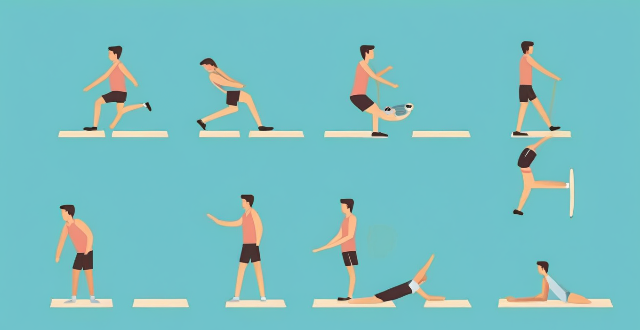
How do force vectors influence an athlete's movement in sports biomechanics ?
Force vectors play a crucial role in sports biomechanics. The magnitude and direction of force vectors determine an athlete's acceleration, deceleration, and direction of motion. There are several types of force vectors, including internal, external, contact, frictional, and elastic forces. Understanding how these force vectors influence an athlete's movement is essential for improving performance and preventing injuries in sports. Coaches and athletes can use this knowledge to optimize their training programs and techniques.

Can sport monitoring technology help prevent injuries ?
Sport monitoring technology has become increasingly popular in recent years, with many athletes and coaches using it to improve performance and prevent injuries. This technology includes wearable devices such as fitness trackers, heart rate monitors, and GPS tracking systems, as well as more advanced technologies like motion capture systems and force plates. Sport monitoring technology works by collecting data on an athlete's movements, heart rate, and other physiological factors. This data is then analyzed to provide insights into the athlete's performance and identify areas where they may be at risk of injury. By tracking an athlete's movements and physiological factors, sport monitoring technology can identify potential injury risk factors early on, help coaches create personalized training plans for each athlete based on their individual needs and abilities, monitor recovery periods between sessions, and educate athletes and coaches about injury prevention strategies. Overall, there is evidence to suggest that sport monitoring technology can help prevent injuries in several ways. However, it is important to note that no technology can completely eliminate the risk of injury, and proper training, conditioning, and safety measures should always be prioritized.

What role does communication play in sports leadership ?
Communication is vital for sports leadership, helping achieveCommunication is vital for sports leadership, helping achievehesion, and foster a helping achieve success, build team cohesion, and foster a positive environment. Clear and concise messaging, active listening, encouragement, and motivation are key components of effective communication in sports leadership. Benefits of effective communication include increased performance, improved team cohesion, enhanced athlete development, and greater satisfaction and retention.

How can sports medicine help athletes recover from surgery or injury ?
**Sports Medicine: Aiding Athletes in Recovery from Surgery or Injury** The field of sports medicine plays a critical role in helping athletes recover from injuries and surgeries. It involves a multifaceted approach that includes pre-operative management, post-operative care, rehabilitation programs, and facilitating a safe return to sport. Professionals in this area assess the injury, prepare the athlete for surgery, manage pain, provide physical therapy, offer nutritional and psychological support, and create tailored rehabilitation programs focusing on functional training, strength building, flexibility, and endurance. The ultimate goal is to ensure the athlete's complete recovery and prevent future injuries.

How do sports psychologists assist coaches in understanding and managing their athletes' mental health ?
Sports psychologists assist coaches in managing athletes' mental health by providing education, individual assessments, mental skills training, counseling, team building activities, crisis intervention, and feedback. This support helps coaches create a supportive environment for athletes to perform at their best mentally and physically.